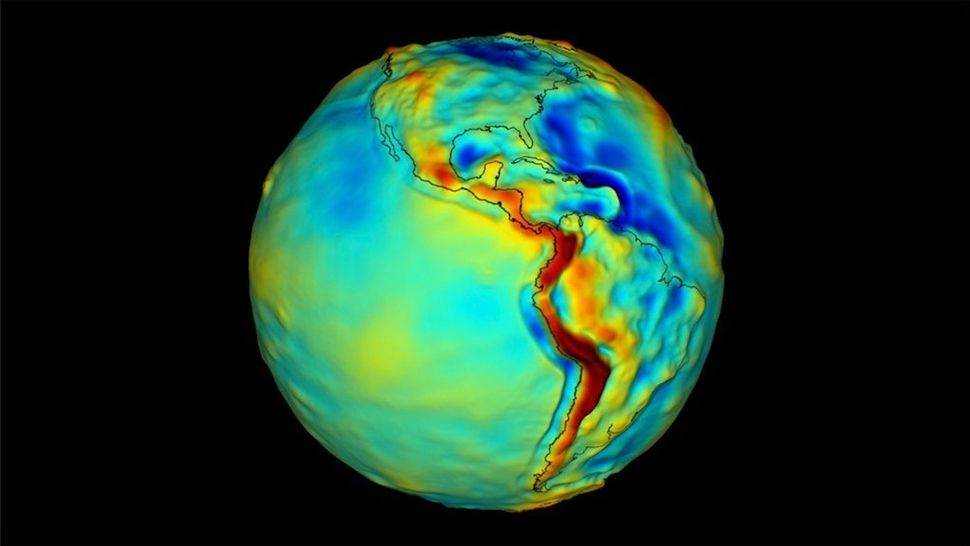NASA developing 1st-ever space-based quantum sensor for gravity measurements
By Victoria Corless published 2 days ago
"We could determine the mass of the Himalayas using atoms."

A map of Earth’s gravity. Red indicates areas of the world that exert greater gravitational pull, while blue indicates areas that exert less. A science-grade quantum gravity gradiometer could one day make maps like this with unprecedented accuracy. (Image credit: NASA)
Scientists are developing an advanced quantum sensor for low Earth orbit that can detect the tiniest tremors in Earth's gravity.
These barely perceptible shifts — caused by moving water, tectonic activity or shifting rock — offer clues about what lies beneath the planet's surface.
The new device could allow the mapping of underground features like aquifers and mineral deposits — crucial data for navigation, resource management and national security, its developers say.
. . .
Quantum sensors, like the Quantum Gravity Gradiometer Pathfinder (QGGPf) instrument developed by JPL, private companies and academic institutions, use clouds of atoms dropped in freefall and cooled to near absolute zero.
As they fall, lasers act like mirrors and splitters, separating the atoms and then bringing them back together. The way the atoms interfere when they recombine reveals how much they were accelerated by gravity, allowing scientists to measure the tiniest changes in gravity with extreme precision.
More:
https://www.space.com/space-exploration/tech/nasa-developing-1st-ever-space-based-quantum-sensor-for-gravity-measurements
